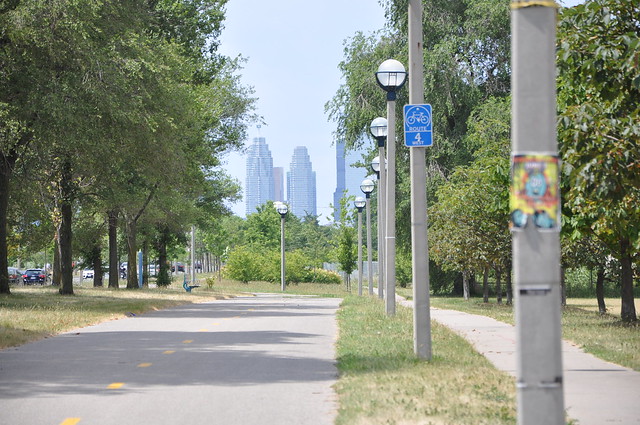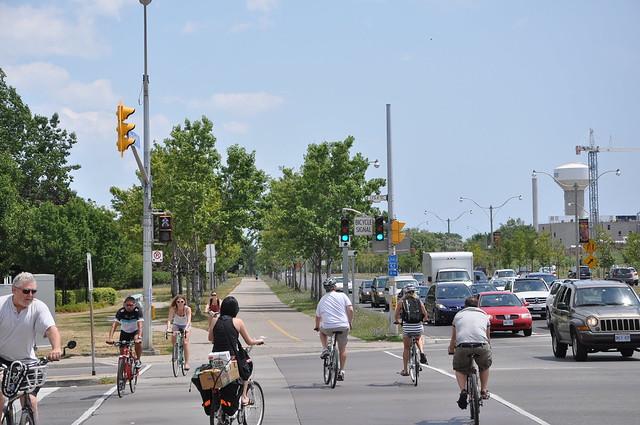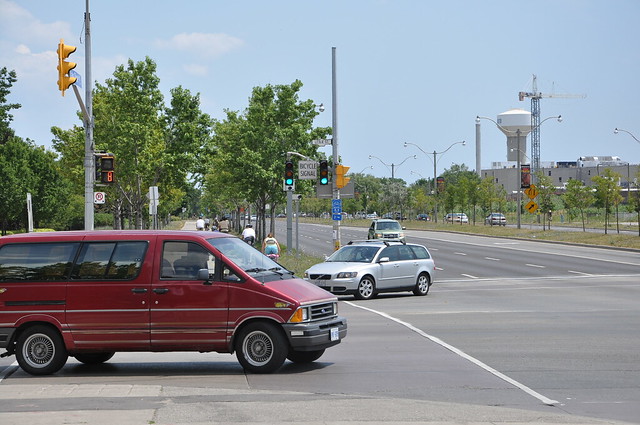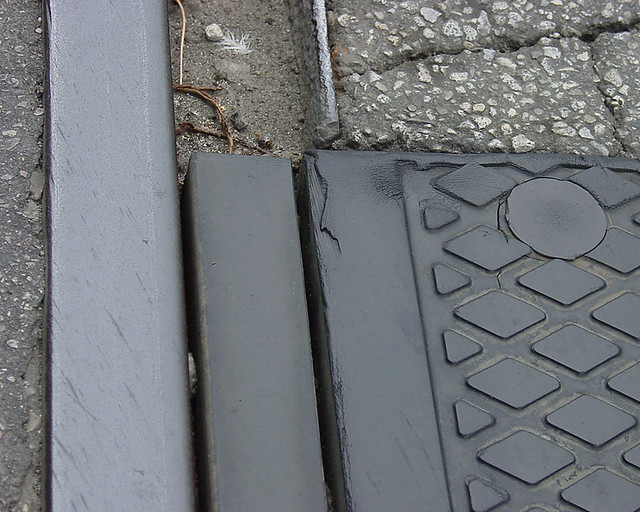I wouldn't call that a good example. The midblock cross-section looks perfect, but the at the intersection, cyclists just get dumped onto an ordinary sidewalk-style crossing. If you need to depend on signs or road markings to
tell users what to do, then the design is not good. A good design would be subconsiously clear to all users even when the signs and road markings were missing.
I see several issues here:
1. Most importantly, the angle of conflict between left turning cars and parallel cyclists is terrible. Drivers will be looking way up the road waiting for a gap, and cyclists would be coming from behind. And unlike pedestrians, bicycles move so fast that even if the driver sees a clear crosswalk the instant they start turning, there could be a bike in the way when they reach the crossing.
View attachment 79880
Generally this conflict should be fully-protected using signals. But this is a two way stop controlled intersection, so that's not applicable here. The next best thing would be to shift the crossing back by one car length, so that drivers can complete their turn and yield to cyclists/pedestrians separately.
2. Drivers turning right off the main street do not get a clear view of approaching parallel cyclists at any point: conflicting bikes approach in their blind spot.
View attachment 79884
This conflict can be mitigated by shifting the crossing point back by one car length so that the conflict is at a 90 degree angle.
3. Cars waiting to turn right onto the main street will block the bicycle crossing. At a signalized intersection, this would correspond to a right turn on red. They will also tend to be looking left, potentially missing cyclists approaching from the right.
View attachment 79881
This conflict can be avoided by shifting the crossing point back by one car length so there is room for cyclists to pass behind a car waiting to turn.
4. The bicycle path is not delineated through the pedestrian conflict points. This is a two way stop controlled intersection, so pedestrians crossing the bike path must always yield to cyclists travelling along the main street. Yet pedestrians just see an ordinary sidewalk - there is no indication that they need to wait for a gap in bicycle traffic. At a signalized intersection, this would correspond to pedestrians inadvertently crossing a bike path that has a green light (which should sound familiar to anyone who has been on Queen's Quay).
View attachment 79883
This conflict would not be an issue if the bike path were completely continuous all the way through the intersection. It is after all a priority movement: all other traffic must yield to north-south bikes, cars and pedestrians.
5. The radius of the corners is very large, which means that drivers will turn more quickly than is safe. Whenever a movement involves yielding, the most important factor for safety is how quickly those users are going.
To minimize cars' turning speeds while still allowing trucks to turn, corners can use over-run aprons such as those found on the inside of roundabouts.
--
A good design might look more like this:
















